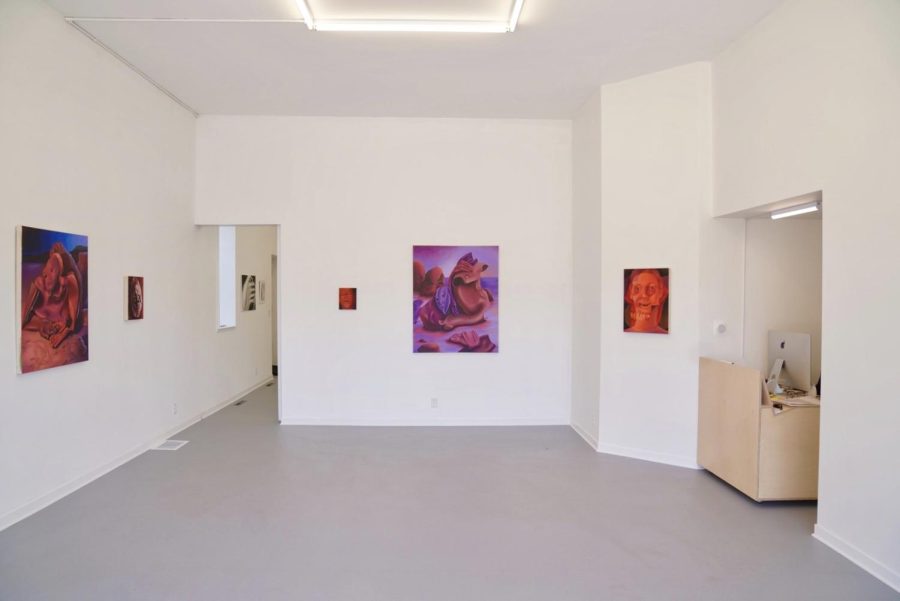What do androids and prehistoric figures have in common, and what if they existed together, simultaneously? Kristen Sanders, working artist and lecturer in the University of Minnesota’s art department, seeks to answer these questions in “Infinite Beach,” her latest collection of paintings now on display at Dreamsong in Northeast Minneapolis.
Sanders’ work is set somehow in both past and future, creating life where there is none with eight works in radioactive color. “I’m really interested in consciousness and the body and how those are kind of connected – or maybe disconnected – in this idea of finding [one’s] self,” Sanders said. “How might an android come to discover a sense of self, and is a body still connected?”
The collection is currently on display at Dreamsong gallery, an arts venue created by Rebecca Heidenberg and Gregory Smith in 2021, and will remain there until April 30. The space seeks to uplift Minnesota-based artists by providing a place to display and sell their work, and boasts two gallery spaces, a cinema and an artist residency.
Heidenberg and Smith discovered Sanders’ work after she submitted to the gallery and found that she’d built up a powerful body of work. “The figures and the landscape just emit this really visceral feeling,” Heidenberg said. “They exist in a kind of space that’s beyond time, but anchored to the prehistoric and also speaking to the future.”
“They are never fully human subjects but they do maintain this sense of consciousness that really speaks to you immediately,” Heidenberg said.

Sanders found inspiration through a variety of different un-human but human-like figures. For reference, she looked at medical mannequins with silicon skinsuits, movie androids like Ava from “Ex Machina” and even robotic, artificially-intelligent sex dolls.
“I was really drawn to these images where the silicone faces were being removed, and the model of those dolls was very similar to Sophia the Robot; she has this silicone face over this robotic skull,” Sanders said.
Two of the largest paintings in “Infinite Beach” focus on piles of body-less silicon forms, fake skin already peeled away from its source to form ambiguous new beings washed ashore. “Midnight Marks” and “Morning Waves” capture timeless moments in combining natural settings with artificial life.
Sanders has been painting these kinds of un-human figures for much of her career, but mostly kept their locations ambiguous to the viewer until this collection, set on a primordial beach.
“There’s just so many connotations that come up with the idea of the ocean: you think of the origin of life and then there’s this idea with these kinds of masks, or these empty skins, or the shells which are also these similarly empty outer coverings,” Sanders said.
“Infinite Beach” holds many personal touches for Sanders. Many of the beached rocks depicted alongside her silicon skins reference real rocks she photographed in her home state of California — and one work borrows a motif from a late artist relative.
“Shell,” the third work in the exhibition and one of her most recent, depicts a cracking ancient seashell against a violent red background. Sanders borrowed the form of the crack from the only surviving image of a painting by her uncle, an artist who passed away in a studio fire in Kyiv, Ukraine when Sanders was four years old. The original painting featured a cracked vase of roses floating in mid-air.
“I used to give myself really strict rules about what I could paint, so it’s been kind of freeing to trust that I can allow myself to make some of these more personal choices,” Sanders said.














